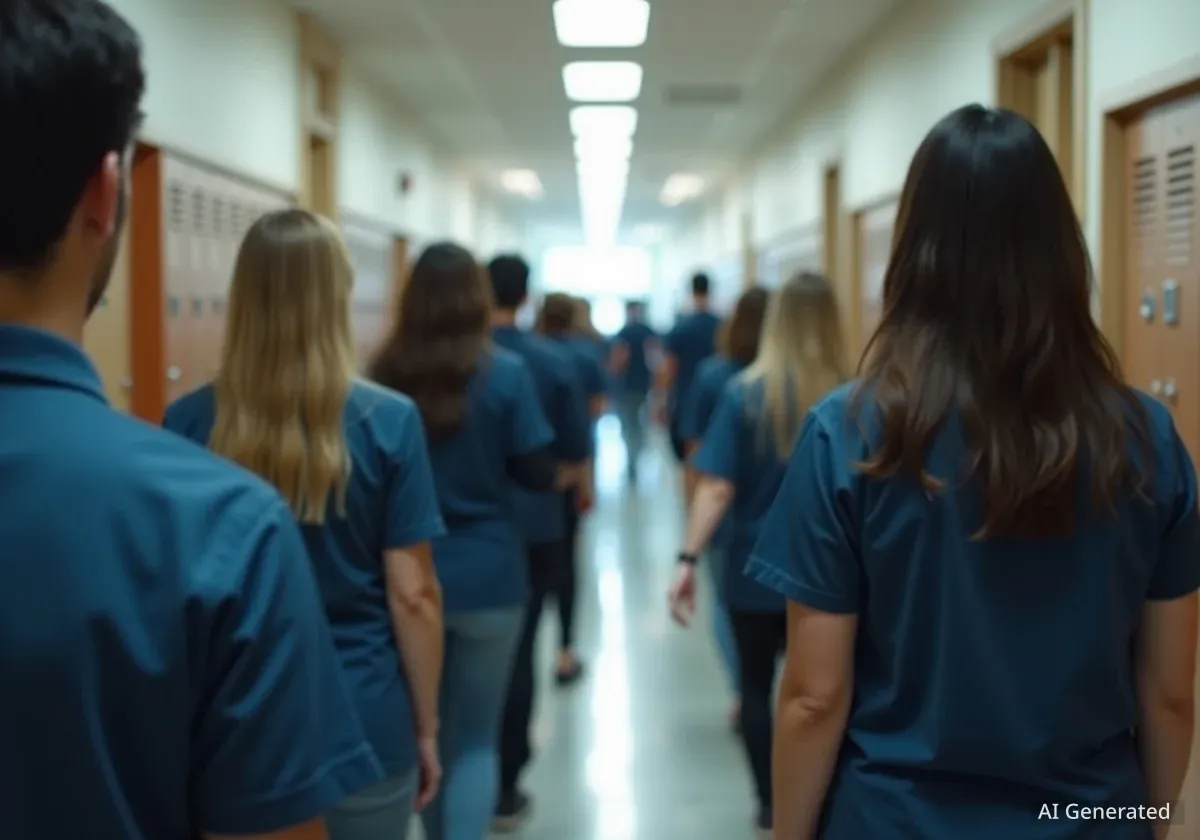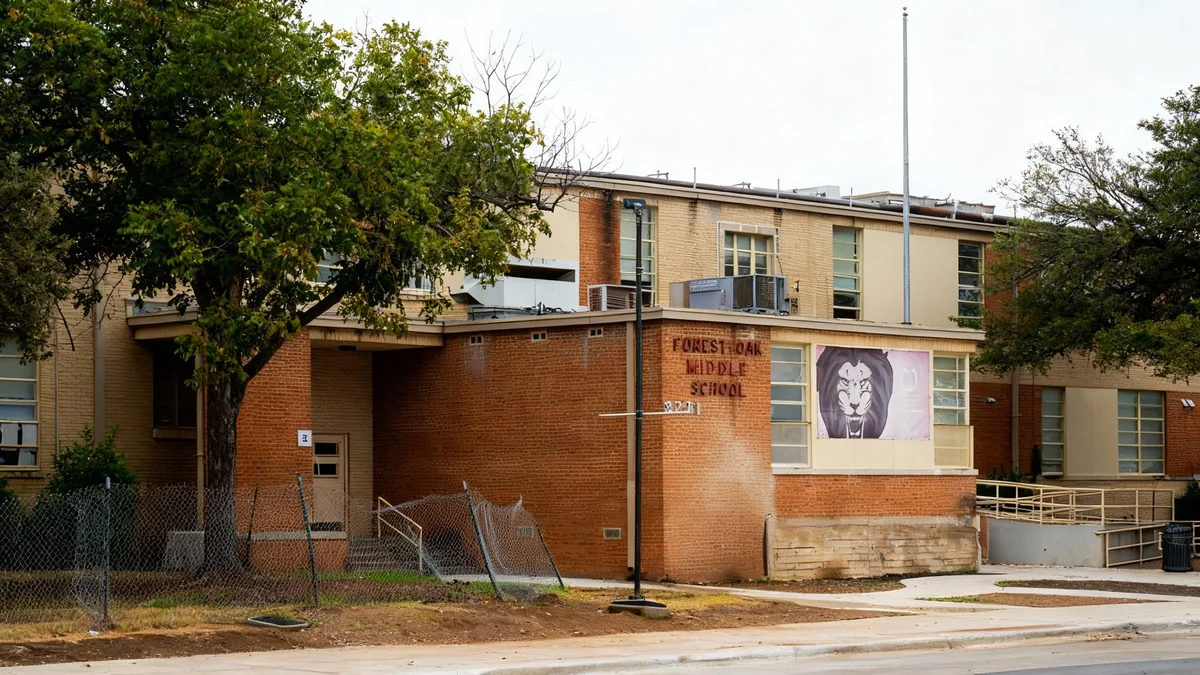A growing number of young Americans are questioning the value of a traditional four-year college degree, turning instead toward skilled trades and vocational training. Faced with soaring tuition costs and a challenging job market for new graduates, Generation Z is increasingly exploring blue-collar professions that offer stable, high-paying careers without the burden of massive student debt.
This shift reflects a broader national sentiment, with recent data showing that a significant majority of Americans believe the country's higher education system is heading in the wrong direction. The trend suggests a fundamental reevaluation of the path to financial success and professional fulfillment in the United States.
Key Takeaways
- Seven in 10 Americans feel the U.S. higher education system is on the wrong path, a notable increase since 2020.
- Enrollment in vocational community colleges saw a 16% jump last year, the highest level since tracking began in 2018.
- Gen Z is burdened with an average personal debt of over $94,000, prompting a search for debt-free career paths.
- Interest in construction, HVAC, and vehicle repair trades among young adults has surged significantly in the past year.
A Crisis of Confidence in Higher Education
Public faith in the promise of a college degree is waning. According to a recent study from the Pew Research Center, 70% of Americans now say the higher education system is moving in the wrong direction. This marks a sharp rise from 56% who held the same view in 2020, indicating a rapidly growing disillusionment.
This sentiment is shared across the political spectrum. The same study found that 77% of Republicans and 65% of Democrats are concerned about the state of higher education, up from 66% and 49% respectively just a few years ago. The core issues fueling this discontent are the skyrocketing cost of tuition and a perceived failure of universities to prepare students for the modern workforce.
By the Numbers: College Perceptions
- 55% of Americans give colleges poor ratings for preparing students for well-paying jobs.
- 52% rate universities poorly on providing necessary financial assistance to students.
- 49% believe colleges are not adequately developing critical thinking and problem-solving skills.
The Financial Squeeze on Young Adults
For Gen Z, the financial reality of pursuing a degree is stark. Many young people graduate with significant debt, only to face a job market where entry-level positions are increasingly scarce. The average Gen Zer carries more than $94,000 in personal debt, a figure substantially higher than that of previous generations at the same age.
This financial pressure is taking a toll. Recent reports show that Gen Z experienced the most significant annual drop in credit scores of any age group since 2020. Their average FICO score has fallen to 676, which is 39 points below the national average. This makes it harder for them to secure loans for cars, homes, or starting a business.
Compounding the problem is a shrinking pool of opportunities for recent graduates. The rise of artificial intelligence has led to the automation of many roles traditionally filled by entry-level workers. As of July, a staggering 58% of students who graduated in the past year were still searching for stable employment. Major tech companies, once a reliable source of high-paying jobs for graduates, have cut hiring for these roles by over 50% since 2019.
The Rise of the Trades
In response to these challenges, a significant portion of Gen Z is finding opportunity and stability in blue-collar work. A 2024 Harris Poll survey revealed that 78% of Americans have noticed a growing interest in trade jobs among young adults. These careers, from electricians to mechanics, often provide a path to a six-figure income without the prerequisite of a four-year degree and its associated debt.
The enrollment numbers support this observation. Vocational-focused community colleges saw a 16% increase in enrollment last year, reaching the highest point since the National Student Clearinghouse started tracking data in 2018.
Booming Vocational Fields
Specific trades are seeing a dramatic influx of young talent. Between 2022 and 2023, there was:
- A 23% surge in Gen Z students enrolling in construction trade programs.
- A 7% increase in participation in HVAC and vehicle-repair programs.
The trend extends beyond community colleges. Many are entering apprenticeships and on-the-job training programs that allow them to earn while they learn. This hands-on approach provides practical skills that are in high demand across the country. Research from Deloitte and the Manufacturing Institute projects that 3.8 million new manufacturing jobs will open up by 2033, signaling a long-term need for skilled labor.
A Shift in the American Dream
This movement is not just about economics; it represents a cultural shift in how success is defined. The traditional path of high school to a four-year university and then a white-collar job is no longer seen as the only, or even the best, route to a stable life.
The conversation is happening in households across the nation, even at the highest levels of industry. Ford CEO Jim Farley recently shared that his own son chose to work as a mechanic over the summer and questioned the necessity of college. Farley noted his son's interest in being part of an "essential economy" where skills are tangible and demand is constant.
"Should we be debating this?" Farley recalled asking his wife, acknowledging it is a discussion stirring in many American families. "It should be a debate."
As Gen Z continues to navigate a complex economic landscape, their choices are reshaping the labor market and challenging long-held beliefs about education. By prioritizing skills, financial stability, and practical experience, they are forging a new version of the American Dream—one built with their hands, not just their degrees.





